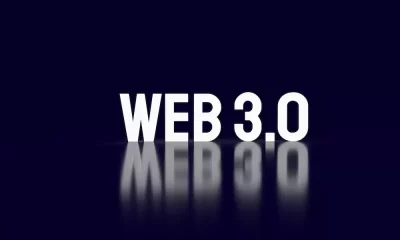Technology
All You Need To Know About Digital Asset Management For Video Media And Production

Businesses have a wide range of assets (things owned by the company) that vary from tangible to intangible, operational to non-operational, and so on. However, as the digital world started to develop, businesses had to add a new type to the list – digital assets.
What Exactly Are Digital Assets?
In broad terms, digital assets are electronically stored files, in any format, that are owned by the business.
This can be anything from an MS Word document containing detailed corporate culture and business flow (usually confidential information) to cryptocurrencies or NFTs.
But there’s more. Videos produced by the company, logos paid for by and designed for the company, and text content created and published on social media are also digital assets.
Now, suppose you think about the activity of an average SMB when it comes to marketing campaigns, online communication with customers, and online communication with employees and partners. In that case, it’s easy to imagine that a lot of digital assets will be produced in a relatively short time.
So what happens with these assets? Do they get deleted, stored, or forgotten? In most cases, businesses want to keep these digital creations. After all, you never know when you’ll want to re-use some content or when old creations can be used as inspiration.
And this is where Digital Asset Management, or DAM enters the scene.
Digital Asset Management (DAM)
In this section, we will talk shortly about the usefulness of a DAM and its various subsets i.e.
- VAM (Video Asset Management software)
- MAM (Media Asset Management)
- PAM (Production Asset Management)
What is a DAM
Before discussing the role of a DAM system in your business, let me ask you how often you find the correct file on the first try? Also, how much time do you (and your team members) waste on average looking for files, re-creating lost content, or working on the wrong version of a file?
If you don’t lose time and resources with these pointless but usually unavoidable activities, then you don’t need a DAM. However, most people don’t have their ducks in a row for critical digital files.
DAM systems are unique platforms that allow businesses to keep track of all their digital assets while ensuring everything is readily available to everyone on the team.
Different Types of DAM
Depending on the type of files you keep in storage, you may need more than a regular DAM (the system at the base of all digital asset management platforms).
While the DAM works excellently for managing different types of digital assets, companies with a specific format will benefit more from a more tailored platform for their needs.
We had several subsets, such as the VAM, MAM, and PAM. They are not cool girl names, but they are excellent tools that help keep the craziness under control. Here’s how:
VAM (Video Asset Management software)
A VAM platform is tailored for video content management. It includes specific functionalities such as a built-in basic video editor, collaboration tools, sharing options, and tracking.
This system allows more contributors to work on the same project and supports direct upload to distribution channels such as YouTube or Vimeo.
MAM (Media Asset Management)
Marketing companies and businesses with various media files would best work with a MAM platform because it’s designed to work with large files of multiple formats.
Its collaboration and access features are well-developed, allowing team members easy access to whatever they need.
MAM systems are ideal for large teams who need to be in touch with each other while also constantly working on their part. Plus, this system allows stakeholders and external collaborators to add their input on changes.
PAM (Production Asset Management)
PAM platforms are designed to keep up with video production workflow. These platforms handle large media files and are used by companies that produce films, video games, or animations. Also, they are designed to help keep track of fast-moving projects that work with digital assets that are constantly changing (such as film or video games).
A PAM system is fantastic at organizing crazy workflows and can accurately track who edited what. That’s why people working in video and film production love it!
A MAM is an ideal solution when you need a smooth system that allows in-action teams to collaborate with pre-production!
Key Takeaway
In a way, we can compare DAM platforms with ERP systems. While one is used to improving customer communication and keeping business flow well-organized, the other, i.e., DAM, has a similar role but organizes digital assets.
In a nutshell, a growing business needs all the help it can get to the organization of assets (regardless of their type). 🙂









